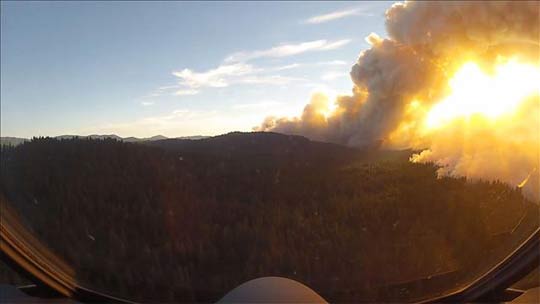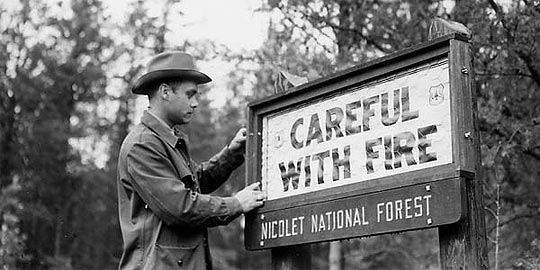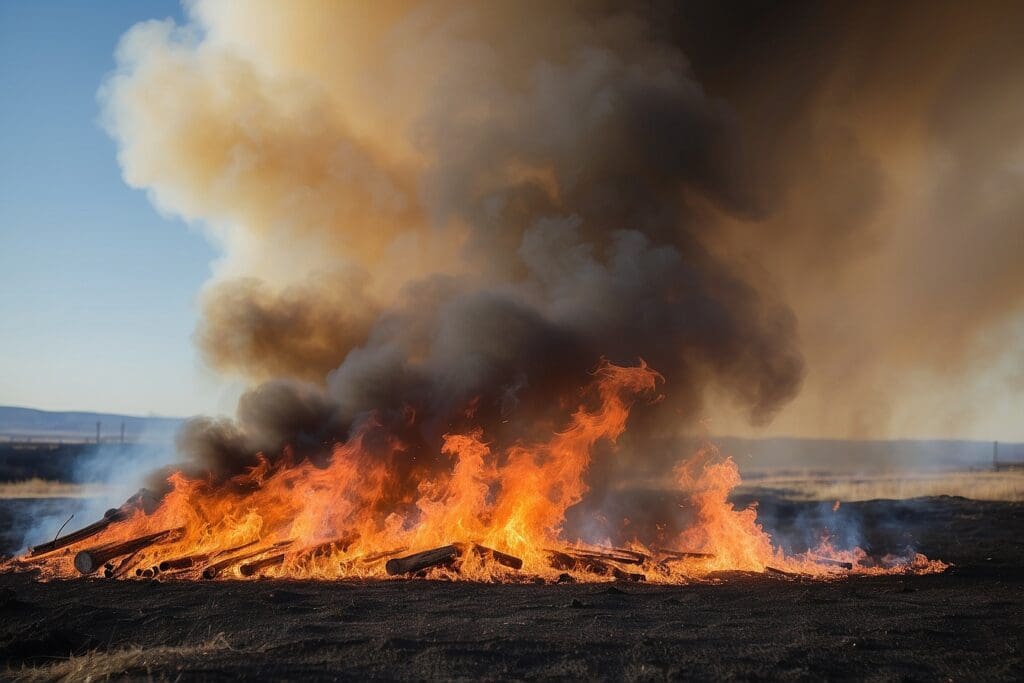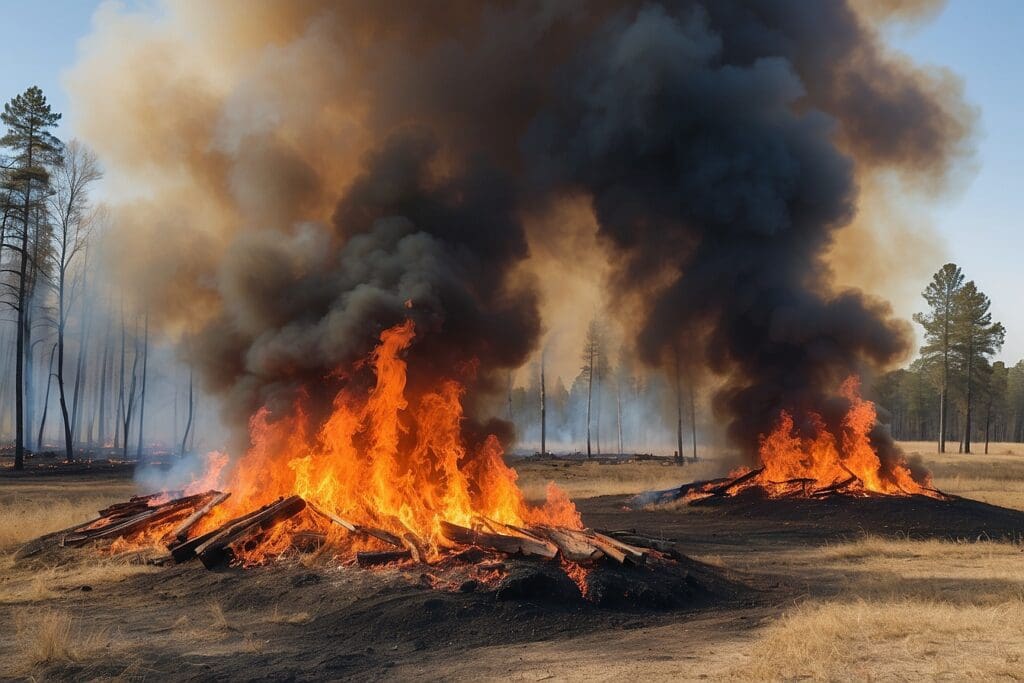A forest fire in Stanislaus National Forest destroyed 402 square miles of Northern Californian land back in August of 2013. The fire was able to grow quickly due to the large amount of extremely dry brush, oaks, and pines in the area.1 Since this fire, known as the Rim Fire, destroyed a large area and was undoubtedly fueled by California’s recent drought conditions, the fire received a great deal of media attention and the issue of forest fire policy resurfaced. Since forest fire policy has always been a hotly contested issue, it is important to understand the history of forest fire policy in the United States and the pros and cons of controlled burning.
 i
i
History of U.S. Fire Policy
A preoccupation with fire dates back to the very first years of the original American settlements. In 1638, Massachusetts passed a law banning smoking outdoors to prevent forest fires in light of the inevitable destruction of settlements if a forest fire were to occur. Ten years later, Peter Stuyvesant, governor of what is now New York City, established Fire Wardens to protect citizens. The Fire Wardens was the first fire suppression organization to be formed in the U.S. In 1872, Yellowstone National Park was established, with the caveat that anyone who did not extinguish their fire while camping could be fined or imprisoned in the interest of protecting the park. By 1889, due to the plethora of fires in the park, designated campgrounds were established at Yellowstone.2
Interestingly enough, the first people to officially fight fires in the protected forest areas were members of the military. From 1890 to 1914, the military patrolled the parks during the summer months to fight fires. In 1908, with over 37 million acres protected as Forest Reserves, the Forest Fires Emergency Act was passed. This Act authorized the Forest Service to spend whatever amount necessary on firefighting.3 In 1910, the traditional view on forest fires came to be when Forest Service Chief Henry Graves stated that, “The first measure necessary for the successful practice of forestry is protection from forest fires.” While it is clear that fire suppression had been part of U.S. forest policy since the 1600s, Graves’ statement solidified this view. However, there were a few brave individuals that went against this policy. For instance, in 1926, Colonel John White of the National Park Service had his rangers conduct several controlled burns.4
 ii
ii
The “10 A.M. Policy” instituted in 1936 marked one of the most aggressive times for forest fire suppression in the Nation. The Forest Service stated that after a fire was reported, it needed to be contained by 10 A.M. If it was not possible to contain the fire by 10 A.M. that first day, it needed to be controlled by 10 A.M. the next day. This policy was implemented nationally.5 Finally, in 1946 after many incredibly destructive fires in Florida, the Forest Service granted permission for controlled fires in the national forests in Florida. The success of these efforts was a turning point, as people began to acknowledge that many ecosystems rely on fire to survive. The new Administrative Policies for Natural Areas of the National Park System strengthened this new approach to firefighting in 1968 when they stated that, “The presence or absence of natural fire within a given habitat is recognized as one of the ecological factors contributing to the perpetuation of plants and animals native to that habitat.”6 In the coming decades, the Forest Service continued to practice controlled burning methods, while also discontinuing the 10 A.M. policy. Each national park was even required to develop and submit a fire management plan to the National Park Service.7
Negative Impacts of Controlled Burns

Los Alamos, New Mexico experienced the negative implications of controlled burning back in 2000. A controlled burn got out of hand and burned over 45,000 acres and 235 homes. An investigation in 2002 ruled that this fire, which is known as the Cerro Grande fire, occurred because it was not properly planned or implemented.8 When the issue of controlled burning is brought up, those against it often cite human safety. Unfortunately, the Cerro Grande fire is not the only one that has escaped the control of federal forest firefighters. Fires also potentially release emissions and particulates that can negatively impact the air quality for nearby wildlife and humans.9
https://web.archive.org/web/20170426044104if_/http://www.youtube.com/embed/MnkxPPhM6yA iii
Positive Impacts of Controlled Burns
On the other side of the coin, supporters of controlled burns also cite human safety as a reason to conduct controlled burns. Controlled burns routinely remove dry underbrush that, if left unattended, would fuel disastrous, impossible-to-manage invasive species ![]() from taking over an ecosystem. Lastly, fire prevents the overcrowding of trees so that each tree can have enough resources to live healthily.11
from taking over an ecosystem. Lastly, fire prevents the overcrowding of trees so that each tree can have enough resources to live healthily.11
Clearly, U.S. forest fire policy has become more informed since the days of exclusively endorsing fire suppression. However, there is still a significant amount of research that needs to be conducted as we sort out the negative and positive impacts of controlled burns in the twenty-first century.





